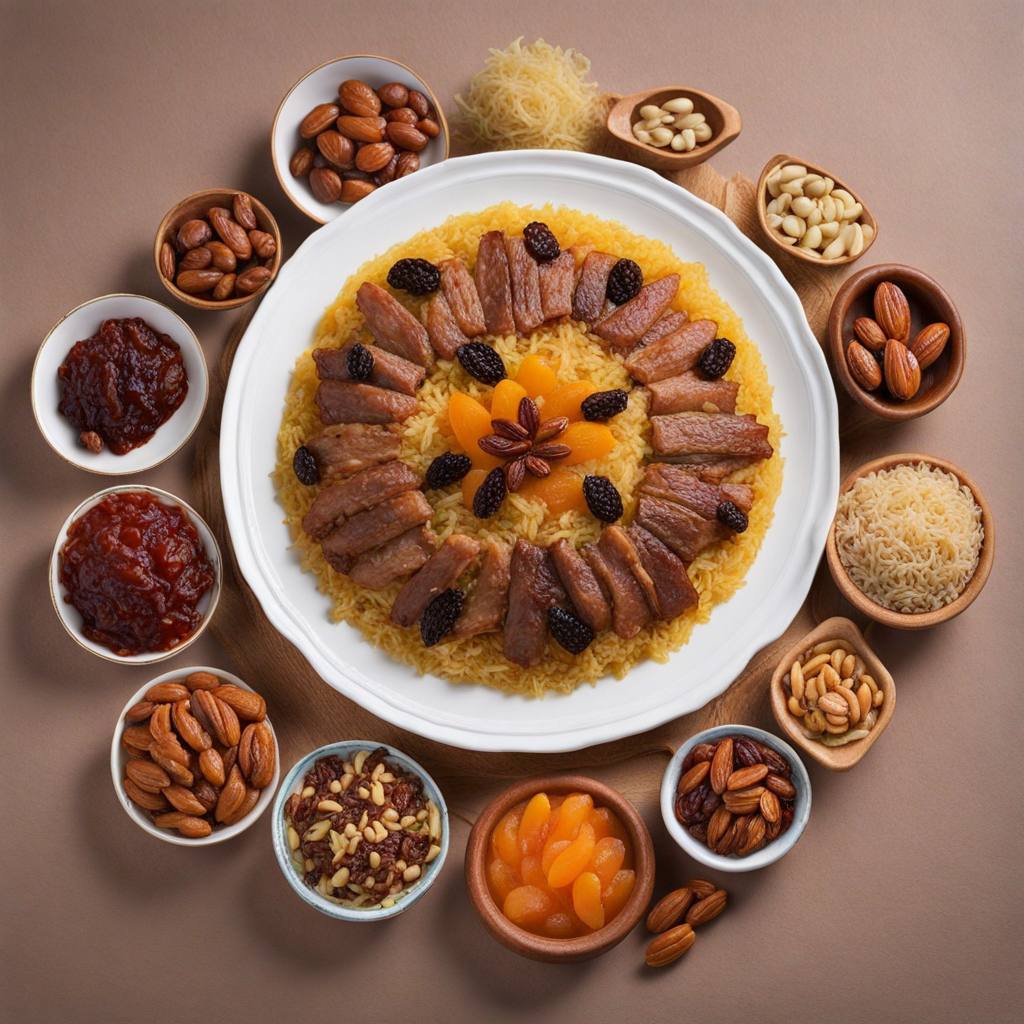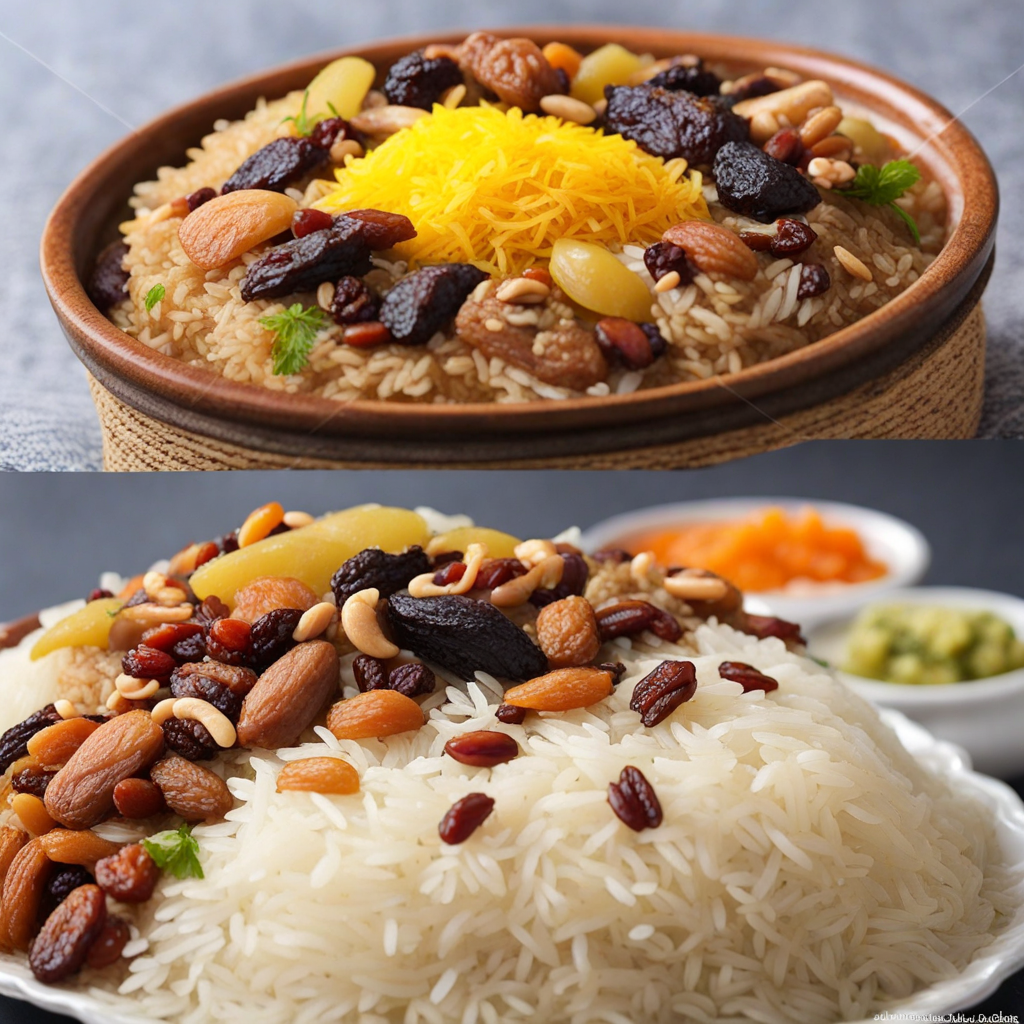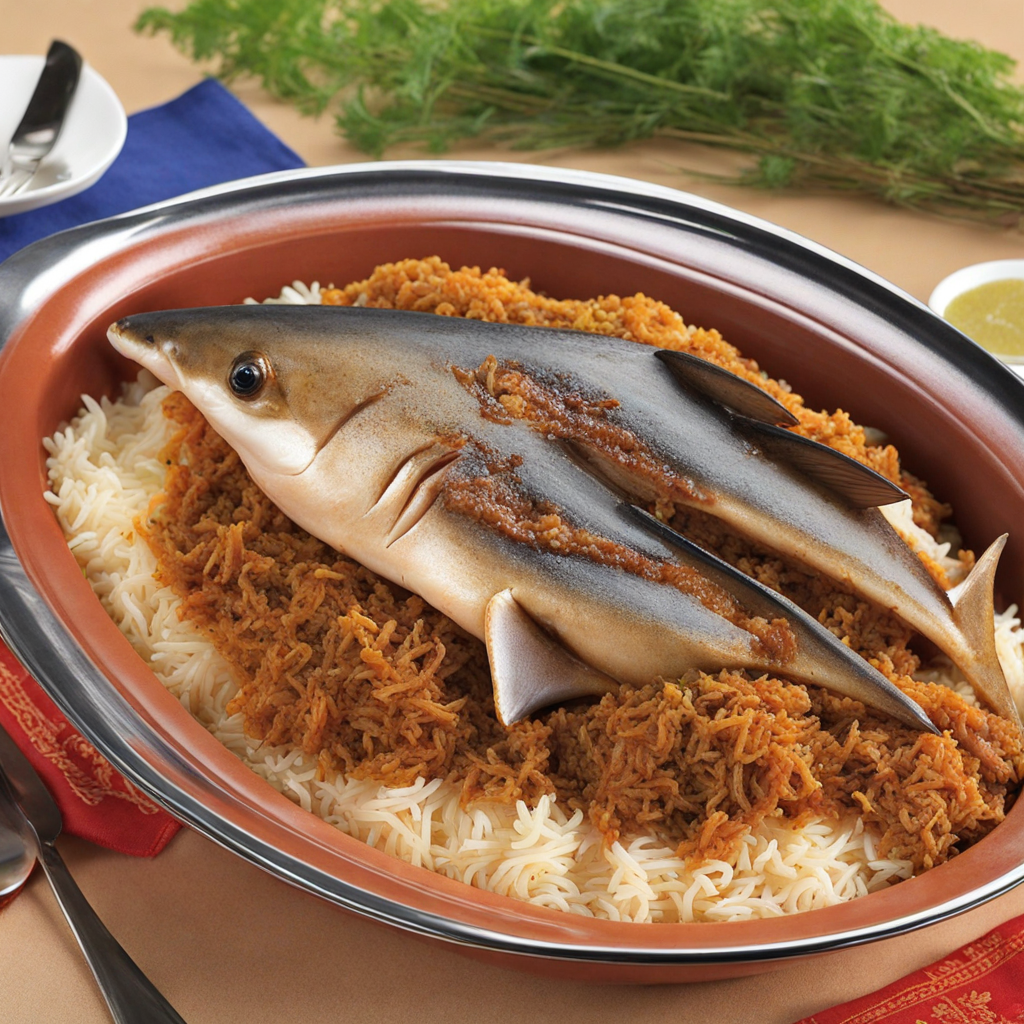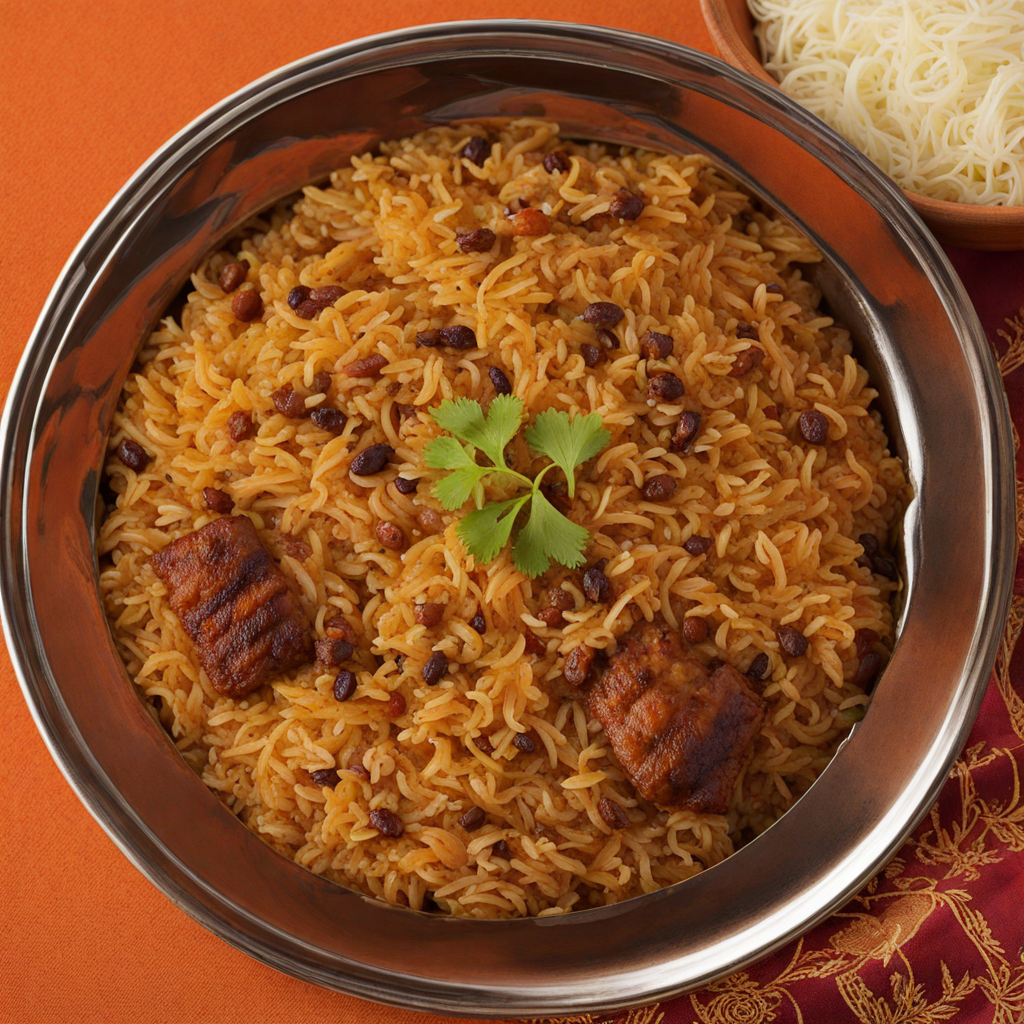Qabuli
Qabuli is a delightful Omani dish that captures the essence of traditional Arabian cuisine, offering a unique blend of flavors and textures. This aromatic rice dish is typically prepared with basmati rice, which is simmered to perfection and seasoned with a variety of spices including saffron, cardamom, and cinnamon. The rice is often adorned with tender pieces of meat, commonly lamb or chicken, that have been marinated and slow-cooked to enhance their rich, savory flavor. The result is a visually stunning dish that boasts a golden hue and an enticing aroma that beckons diners to indulge in its warmth. What sets Qabuli apart is its vibrant array of accompanying ingredients. The dish is usually garnished with a colorful mix of carrots, raisins, and nuts, such as almonds or pistachios, adding a delightful crunch and sweetness that perfectly balances the savory meat and fragrant rice. Some variations even include a touch of fresh herbs or a sprinkle of fried onions, elevating the dish to new heights of flavor complexity. Each bite is a harmonious fusion of sweet, savory, and aromatic elements, making it an unforgettable culinary experience. Traditionally served during festive occasions or family gatherings, Qabuli is more than just a meal; it symbolizes hospitality and community in Omani culture. Diners often enjoy it with flatbreads or a side of fresh salad, allowing for a diverse tasting experience. Whether enjoyed at a local eatery or prepared at home, Qabuli embodies the heart and soul of Omani cuisine, inviting food lovers to explore its rich heritage and savor its exquisite taste.
How It Became This Dish
The Culinary Journey of قابولي (Qabuli) from Oman Qabuli, a fragrant rice dish enriched with spices and often adorned with tender meat, holds a significant place in Omani cuisine and culture. The origins of Qabuli can be traced back to the broader Middle Eastern culinary traditions, yet it has evolved uniquely within Oman, reflecting the nation’s history, geography, and diverse cultural influences. Origins and Historical Context The roots of Qabuli can be linked to the ancient trade routes that traversed the Arabian Peninsula. Oman, strategically located along these routes, became a melting pot of cultures and flavors, with influences from Persia, India, East Africa, and even China. The name "Qabuli" itself is believed to be derived from the Afghan dish "Kabuli Pulao," which features similar ingredients and preparation methods. This connection emphasizes the historical exchange of culinary practices across regions. While the exact timeline of Qabuli's introduction to Oman is not precisely documented, it is likely that the dish gained popularity during the Islamic Golden Age (8th to 14th centuries), a period marked by significant advancements in trade, science, and culture throughout the Islamic world. Spices such as saffron, cardamom, and cinnamon, which are quintessential to Qabuli, became widely available through trade, enriching the culinary landscape of Oman. Cultural Significance In Oman, Qabuli transcends mere sustenance; it embodies the spirit of hospitality and community. Traditionally, this dish is served during special occasions, celebrations, and communal gatherings, symbolizing the warmth and generosity of Omani culture. The preparation of Qabuli is often a communal affair, where family members come together to cook, echoing the dish's role in fostering social bonds. The ingredients of Qabuli are not only rich in flavor but also steeped in cultural significance. The use of rice, particularly basmati, signifies prosperity and abundance. The addition of meat, usually chicken or lamb, reflects the importance of livestock in Omani agricultural practices. Moreover, the vibrant colors of the dish, brought about by the spices and garnishes, are reminiscent of the rich natural beauty of Oman, from its golden deserts to its lush valleys. Development Over Time As Oman has evolved through the centuries, so too has Qabuli. The dish has adapted to incorporate local ingredients and preferences, resulting in a variety of regional interpretations. For instance, coastal communities may infuse their Qabuli with seafood, while interior regions might emphasize the use of game or locally sourced herbs. During the 20th century, with the rise of modernization and globalization, Omani cuisine, including Qabuli, began to gain international recognition. The influx of expatriates and tourists introduced new culinary influences, leading to innovative reinterpretations of traditional dishes. Chefs started experimenting with fusion flavors and presentations, while still respecting the essence of Qabuli. The advent of social media and food tourism in the 21st century has further propelled Qabuli into the global spotlight. Food bloggers, chefs, and culinary enthusiasts have shared their experiences with Omani cuisine, highlighting Qabuli’s unique flavor profile and cultural significance. This has resulted in a renewed interest in traditional Omani dishes among younger generations, who seek to preserve their culinary heritage while exploring contemporary cooking methods. Preparation and Ingredients The preparation of Qabuli is an art form in itself, involving a careful selection of ingredients and techniques. The foundational element is rice, usually basmati, known for its long grains and aromatic qualities. The rice is often soaked before cooking to achieve the perfect texture. The dish typically includes marinated meat, which is slow-cooked to achieve tenderness. The marinade often consists of yogurt, spices, and sometimes lemon juice, enhancing the meat's flavor. Aromatic spices such as cumin, coriander, and the star of the show, saffron, are essential, providing not only flavor but also a beautiful golden hue to the rice. Once the meat is cooked, it is removed from the pot, and the rice is prepared in the remaining broth, allowing it to absorb the rich flavors. Nuts, such as almonds or raisins, are often added for texture and sweetness, while fresh herbs like coriander or parsley add a burst of freshness to the dish before serving. Modern Interpretations and Global Reach In recent years, Qabuli has found a place in international culinary festivals and Omani restaurants around the world. Chefs have embraced the dish, offering their interpretations while celebrating its traditional roots. This has led to the emergence of fusion dishes that incorporate elements from various cuisines, such as Qabuli-stuffed vegetables or Qabuli-inspired risottos. Moreover, the globalized world has allowed for greater accessibility to Omani ingredients. Saffron, once a luxury item only available to the wealthy, can now be found in markets around the globe, enabling home cooks to recreate Qabuli and share it with diverse audiences. In Oman, the resurgence of interest in traditional dishes like Qabuli has prompted culinary schools and home cooks alike to explore and teach the craft of Omani cooking. This revival is part of a broader movement to preserve cultural heritage in the face of rapid modernization, ensuring that the rich culinary traditions of Oman continue to thrive. Conclusion The journey of Qabuli from its ancient origins to its contemporary manifestations is a testament to the resilience and adaptability of Omani cuisine. This dish not only nourishes the body but also serves as a cultural artifact, reflecting the history, traditions, and values of the Omani people. As Qabuli continues to evolve and gain recognition worldwide, it remains a cherished emblem of Omani identity, reminding us of the power of food to connect us across cultures and generations. Through every bite of Qabuli, one can taste the rich tapestry of history, hospitality, and heritage that defines Oman.
You may like
Discover local flavors from Oman







